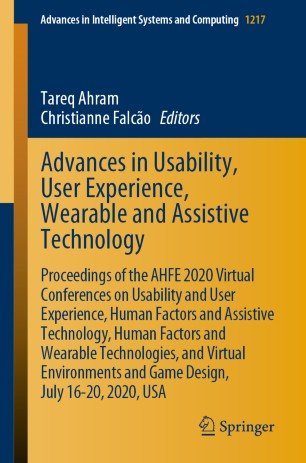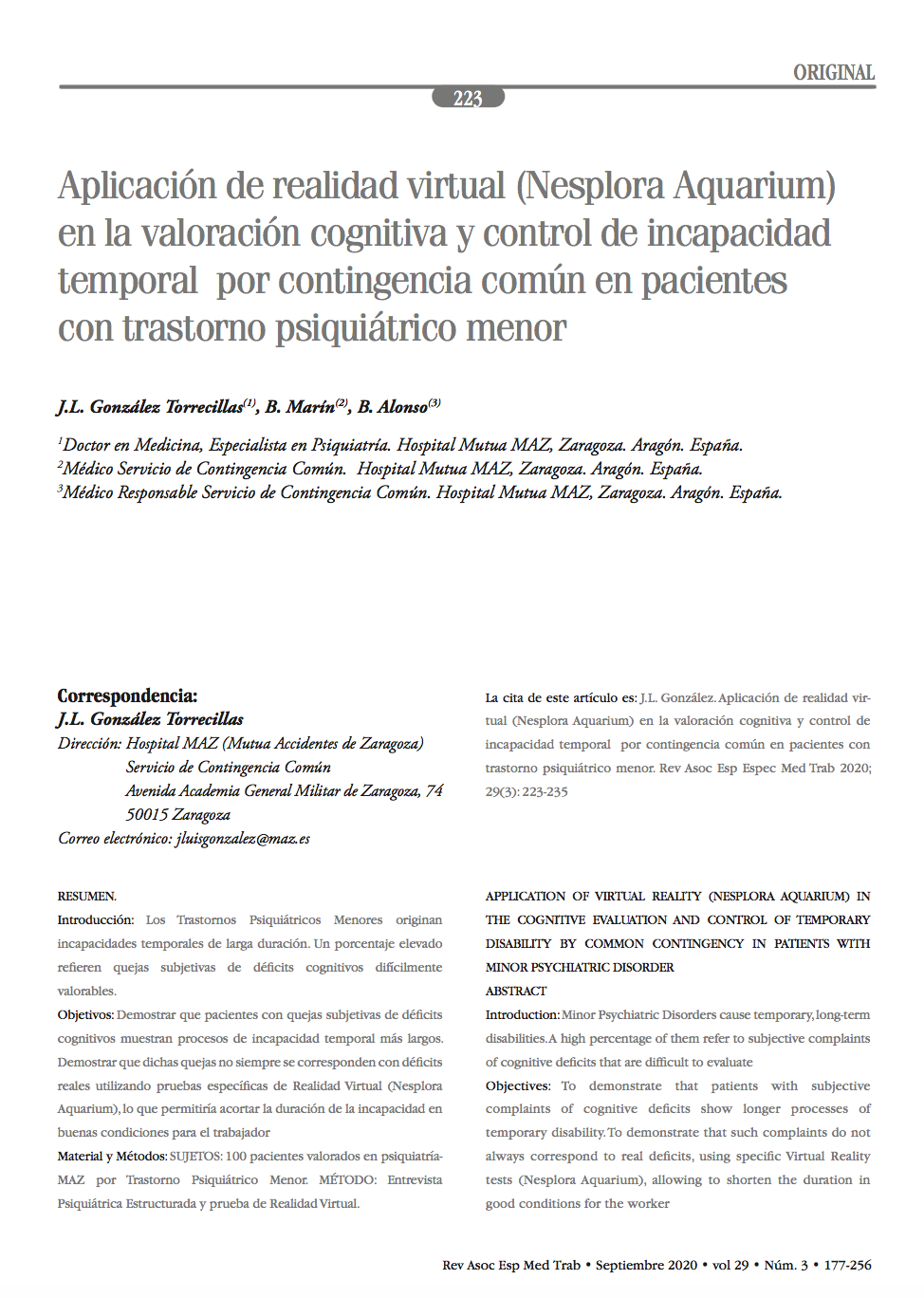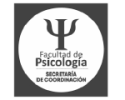» data-original-title=»Author Bio»>Camacho-Conde, José Antonio. Cognitive Function Assessment of a Patient With PTSD Before and After EMDR Treatment. Journal of EMDR Practice and Research. 10.1891/EMDR-D-20-00022
Objetivos: Demostrar que pacientes con quejas subjetivas de déficits cognitivos muestran procesos de incapacidad temporal más largos. Demostrar que dichas quejas no siempre se corresponden con déficits reales utilizando pruebas específicas de Realidad Virtual (Nesplora Aquarium), lo que permitiría acortar la duración de la incapacidad en buenas condiciones para el trabajador.
(…) Los resultados pueden ser de gran utilidad en prevención laboral y facilitar el adecuado retorno al trabajo tras una IT por TPm.
Con el presente estudio, hemos establecido una clara vía de investigación, poniendo de relieve la importancia de utilizar modernas y actuales técnicas de realidad virtual en la valoración psiquiátrica de las funciones cognitivas de los pacientes en situación de IT.
J.L. González. Aplicación de realidad virtual (Nesplora Aquarium) en la valoración cognitiva y control de incapacidad temporal por contingencia común en pacientes con trastorno psiquiátrico menor. Rev Asoc Esp Espec Med Trab 2020; 29(3): 223-235
Aceres et al. (14) presented a VR-CPT test (Nesplora Aquarium) for adolescents and adults that was designed to measure executive function. The study used the Adult ADHD Self-Report Scale (ASRS) as the ADHD symptom scale. The results showed that the VR test Nesplora Aquarium significantly predicted current and retrospective ADHD symptoms.
Wiguna, Tjhin & Wigantara, Ngurah & Ismail, Raden & Kaligis, Fransiska & Minayati, Kusuma & Bahana, Raymond & Dirgantoro, Bayu. (2020). A Four-Step Method for the Development of an ADHD-VR Digital Game Diagnostic Tool Prototype for Children Using a DL Model. Frontiers in Psychiatry. 11. 829. 10.3389/fpsyt.2020.00829.
Recently, some tools invented to help schoolteachers in the diagnosis and behavior management of students having ADHD. Teachers should be aware of their existence, as well as their usefulness. These tools include Aula Nesplora in primary schools [15] and Aquarium Nesplora in secondary schools [16].
Alshehri, A.M.; Shehata, S.F.; Almosa, K.M.; Awadalla, N.J. Schoolteachers’ Knowledge of Attention-Deficit/Hyperactivity Disorder—Current Status and Effectiveness of Knowledge Improvement Program: A Randomized Controlled Trial. Int. J. Environ. Res. Public Health 2020, 17, 5605.
Attention deficit hyperactivity disorder (ADHD) is a neurodevelopmental disorder that is highly prevalent in children and adolescents, with estimated prevalence ranges from 5.9 to 7.1% globally and 1 to 6.8% in Spain. This has commonly been associated with deficits in attention threads and executive functions. This paper aims to study the cognitive-executive performance of adolescents between the ages of 17 and 23 with an ADHD diagnosis, relative to a control group. The total sample consisted of 120 male participants who were given the Nesplora Aquarium test. Dual execution tasks assessed attention, response speed, and inhibition capability. When comparing the experimental and control groups, statistically significant differences were detected in processing speed, selective attention, and cognitive inhibition [general execution (T_correct_n) (p ¼ 0.008), attention arousal (T_omission_n) (p ¼ 0.008), and processing speed (T_correctreactime_mean) (p ¼ 0.008)]. We demonstrate that a new virtual reality tool, designed to measure attention in people over the age of 16 years, is effective at measuring attention and working memory. In addition, item difficulty and discrimination values were also acceptable.
(2020) Attentional profile of adolescents with ADHD in virtual-reality dual execution tasks: A pilot study, Applied Neuropsychology: Child, DOI: 10.1080/21622965.2020.1760103
This project has received funding from the Horizon 2020 research and innovation program of the European Union under the grant agreement [733901]. Here, we show that significant differences (CI = 95%) can be seen between the control group and the group with depression in the variables related to the speed of visual processing (p = 0.008) in the absence of distractors (p = 0.041) and during the first dual execution task (p = 0.012) (See Table 1). Unlike in the clinical depression group, no significant differences were observed in any of the variables related to the processing speed of patients with anxiety disorders, compared to control subjects. If significant differences (CI = 95%) can be seen between the control group and the anxiety group in all variables related to the level of attentional arousal, that would indicate a lower performance of the clinical group with anxiety in this function. Both patients with depression and anxiety did not differ from controls in scores related to sustained attention.
Camacho-Conde, José & Legarra, Leire & Miquel, Vanessa & Cano, Patricia & Guasch, Monica & Torres, María & Serret, Vanessa & Mejías, Miguel. (2020). Assessment of the attentional processes in patients with anxiety-depressive disorders through virtual reality. July 2020 Conference: FENS 2020 Virtual Forum
… AQUARIUM, es semejante a AULA. En este caso se trata de un acuario donde se mide los procesos de atención para edades de análisis entre los 16 y los 90 años 11 . …
Attention deficit disorder and hyperactivity (ADHD) is the main reason for consultation in most Pediatric Neurology units in Spain. The new technologies also associate benefits for both patients and professionals and the health system itself, which makes its rational implementation essential. Genetics, neuroimaging or virtual reality, for example, are clear exponents of the results that can be achieved by optimizing traditional processes. The different technologies that we collect in this article are fully operational and have thousands of experience in patients. The incorporation of them to the usual clinical practice is in our hands.
Fernández, Manuel & Morillo, María & Gilibert, Noelia & Carvalho, Carla & Bello, Sabina. (2020). The technological tools of the diagnosis and treatment of attention deficit disorder and hyperactivity. Medicina. 80 Suppl 2. 67-71.
 Attention requires the ability to stay concentrated and alert to stimuli over prolonged periods of time. Virtual reality (VR) can be used in various training situations where attention plays a major role (e.g. system operators). Here, we investigate the effects of visual and auditory stimuli on attention performance in a VR aquarium (Nesplora Aquarium). Participants pay attention to the main fish tank and respond by pressing a button. The stimuli are different species of fish that are delivered either via visual or auditory channels. Thirty-seven participants completed the VR test and paper questionnaires. We found that attention is influenced differently by sensory modalities. Attention performance measured by the reaction time to correct targets and the number of errors of omission were better in the visual condition, while the number of errors of commission were lower in the auditory condition. The human factors’ role in attention tasks is also discussed.
Attention requires the ability to stay concentrated and alert to stimuli over prolonged periods of time. Virtual reality (VR) can be used in various training situations where attention plays a major role (e.g. system operators). Here, we investigate the effects of visual and auditory stimuli on attention performance in a VR aquarium (Nesplora Aquarium). Participants pay attention to the main fish tank and respond by pressing a button. The stimuli are different species of fish that are delivered either via visual or auditory channels. Thirty-seven participants completed the VR test and paper questionnaires. We found that attention is influenced differently by sensory modalities. Attention performance measured by the reaction time to correct targets and the number of errors of omission were better in the visual condition, while the number of errors of commission were lower in the auditory condition. The human factors’ role in attention tasks is also discussed.
Voinescu, Alexandra & Fodor, Liviu-Andrei & Fraser, Danaë & David, Daniel. (2020). Exploring Attention in VR: Effects of Visual and Auditory Modalities. 10.1007/978-3-030-51828-8_89. In book: Advances in Usability, User Experience, Wearable and Assistive Technology, Proceedings of the AHFE 2020 Virtual Conferences on Usability and User Experience, Human Factors and Assistive Technology, Human Factors and Wearable Technologies, and Virtual Environments and Game Design, July 16-20, 2020, USA
Rather than interpreting this as poor validity, it has been argued that ratings and tests capture at least partly different constructs, and that ratings should therefore be seen as an important complement to rather than a replacement for tests. It should also be noted that recent advances have been made using virtual reality techniques for measuring cognitive functioning (e.g., Climent et al.) and it will be important for future research to determine how such methods can be used in combination with ratings to achieve more ecologically valid assessments.
Thorell, Lisa & Lazarević, Nataša & Milovanović, Ilija & Bugarski Ignjatović, Vojislava. (2020). Psychometric properties of the Teenage Executive Functioning Inventory (TEXI): A freely available questionnaire for assessing deficits in working memory and inhibition among adolescents. Child Neuropsychology. 26. 1-8. 10.1080/09297049.2020.1726885.
2019
Attentional and working memory (WM) processes undergo significant changes during different stages of development. However, currently there are not many continuous performance tools based on virtual reality (VR) for measuring  attentional capacity in adults. The present study aimed to obtain normative data for the Nesplora Aquarium VR test in a Spanish population, looking at sex and age variables. In addition, this study also aimed to analyze the psychometric properties of the tool such as scale, internal consistency, and item difficulty and discrimination indices. A total of 1,469 participants from different regions of Spain (57.6% female) with ages ranging from 16 to 90 years old took part in this normative study. Nesplora Aquarium was developed in order to support clinicians in the assessment of attentional processes and WM in adults over 16 years old. It is an 18-minute individual test performed through a VR system. The system provides better visual and auditory immersion in the task than computerized CPTs. This study revealed that the new VR tool, designed to measure adult attention and working memory levels, exhibited good psychometric properties related to reliability and internal consistency. In addition, item difficulty and discrimination values were also acceptable.
attentional capacity in adults. The present study aimed to obtain normative data for the Nesplora Aquarium VR test in a Spanish population, looking at sex and age variables. In addition, this study also aimed to analyze the psychometric properties of the tool such as scale, internal consistency, and item difficulty and discrimination indices. A total of 1,469 participants from different regions of Spain (57.6% female) with ages ranging from 16 to 90 years old took part in this normative study. Nesplora Aquarium was developed in order to support clinicians in the assessment of attentional processes and WM in adults over 16 years old. It is an 18-minute individual test performed through a VR system. The system provides better visual and auditory immersion in the task than computerized CPTs. This study revealed that the new VR tool, designed to measure adult attention and working memory levels, exhibited good psychometric properties related to reliability and internal consistency. In addition, item difficulty and discrimination values were also acceptable.
Despite the persistence of attention deficit hyperactivity disorder (ADHD) into adulthood and adolescence, there are few objective, reliable instruments (based on patient performance) that have been shown to be able to predict current and retrospective ADHD symptoms. The present study aimed to explore whether a validated VR test called Nesplora Aquarium is able to predict ADHD symptoms in adults and adolescents, based on both current and retrospective self-reports. A non-clinical sample of 156 adults and adolescents (70 women and 86 men) between 16 and 54 years of age (M = 21.23, SD = 8.04) took part in the study. Virtual reality (VR) variables such as the number of correct answers, omission and commission errors, among others, were used to predict current and retrospective self-reported symptoms of ADHD using multiple regression models. Correct answers and omission errors in the VR test significantly predicted both current and retrospective ADHD symptoms. However, only the number of perseveration errors and gender were able to significantly predict retrospective ADHD symptoms. These findings suggest that inattention problems tend to remain after adolescence, while perseveration errors (which have been related to impulsive behavior) and gender differences tend to diminish.
Areces, Débora & Garcia, Trinidad & Cueli, Marisol & Rodríguez, Celestino. (2019). Is a virtual reality test able to predict current and retrospective ADHD symptoms in adulthood?. Brain Sciences. 9. 274. 10.3390/brainsci9100274. https://www.mdpi.com/2076-3425/9/10/274
El objetivo del presente estudio fue llevar a cabo una evaluación de la usabilidad de Nesplora Aquarium. La muestra se compone de 18 participantes entre 23 y 51 años de edad (M=29,5; DT=7,12) de los cuales 10 fueron mujeres (55,6 %). En primer lugar se llevó a cabo la prueba Nesplora Aquarium, tras la cual se administró System Usability Scale como una medida de usabilidad y aprendizaje en forma de autoinforme. La muestra evaluó la usabilidad de Nesplora Aquarium de buena a excelente. La puntuación media obtenida fue 84,16 (DT=12,63) sobre 100 puntos, lo que indica que la facilidad con que las personas pueden utilizar esta herramienta en particular, se sitúa entre el 90 y 95% superior al resto de herramientas. De esta manera, la realidad virtual se ve como una herramienta útil potencial en evaluaciones neuropsicológicas por los clínicos. Además, en este estudio se ofrece una descripción de Nesplora Aquarium.
The main objective of the current study was to conduct self reported usability evaluation of Nesplora Aquarium. The sample size was 18 participants aged between 23 and 51 years old (M=29.55; SD=7.12) of which 10 were females (55.6%). First of all, it was carried out Nesplora Aquarium test, and after it, participants completed the System Usability Scale as a measure of self-reported system usability and learnability. The sample rated Nesplora Aquarium as good to excellent. The score rated was 84.16 (SD=12.63) over 100, suggesting that the facility with which people can use this particular tool is between 90 and 95% higher than the rest of the tools. Virtual Reality seems to be a useful and confident in the potential to be used for neuropsychological assessment by clinical practitioners. Beside, this study present a description of Nesplora Aquarium.
Voinescu, Alexandra & Fodor, Liviu-Andrei & Fraser, Danae & Mejías, Miguel & David, Daniel. (2019). Exploring the Usability of Nesplora Aquarium, a Virtual Reality System for Neuropsychological Assessment of Attention and Executive Functioning. 1207-1208. 10.1109/VR.2019.8798191. https://ieeexplore.ieee.org/document/8798191
2018
El propósito de la prueba Nesplora Aquarium es ser una prueba objetiva, ecológica y útil para ayudar a los clínicos a diagnosticar mejor los trastornos de atención en adultos. Los clínicos podrían también evaluar la progresión del decline cognitivo y supervisar la eficacia de los tratamientos farmacológicos y no-farmacológicos. En este manual, se realiza una revisión sobre los modelos de atención y su desarrollo a lo largo del curso vital así como sobre el uso de la realidad virtual en este campo. Después de esta revisión, se describe la prueba de Nesplora Aquarium y se presenta su justificación estadística.
Climent-Martínez, G. (2018). Nesplora Aquarium – Manual. San Sebastián: Nesplora
El objetivo de este estudio es analizar la estructura factorial de la prueba Nesplora Aquarium. 882 personas entre las edades de 16 y 60 fueron evaluadas.
Se trata de un Test de Ejecución Continua (CPT) de tres tareas: una tarea AX y dos tareas XNO Dual donde se presentan estímulos visuales y auditivos.
Sólo se tuvieron en cuenta algunas de las principales variables. La solución explicó el 68% de la varianza y se componía de tres factores: arousal atencional, velocidad de respuesta y consistencia, control inhibitorio y capacidad de switching. El análisis posterior se ha llevado a cabo con una muestra compuesta por 1425 personas entre las edades de 16 y 90 años (M=44,4; DT=20,7; mujeres: 57,5%). Se han analizado las principales medidas de ambas tareas de evaluación de ejecución dual (omisiones, comisiones, tiempo de reacción, desviación estándar del tiempo de reacción y switching), lo que explica el 76,3% de la varianza. Se observan tres factores: arousal atencional y switching, atención sostenida y control inhibitorio. Los resultados de este estudio respaldan la evidencia de que Nesplora Aquarium puede evaluar la atención y sus diferentes componentes.
Aierbe, A., Mejías, M., Moreno, M., González, M.F. y Climent, G. (2018, Julio). Factorial Structure of the Nesplora Aquarium virtual reality test for the attentional processes. Póster presentado al International Neuropsychological Society 2018 Mid-Year Meeting, Praga, República Checa.
El test proporciona un perfil atencional completo, incluyendo capacidad de cambio de tarea, memoria de trabajo y ejecución visual y auditiva. La tecnología de la Realidad Virtual proporciona la oportunidad de medir actividad motora durante la tarea y el efecto de distractores ambientales en la ejecución del paciente. La población normativa para la población española ya ha sido recogida (1486 participantes). Estudios con pacientes con depresión, trastornos de ansiedad, TDAH adulto y esquizofrenia están siendo llevados a cabo actualmente para establecer la validez clínica de la herramienta.
Mejías, M., Aierbe, A., González, M.F., Moreno, M. (2018). Development of a Virtual Reality-based Continuous Performance Test for the assessment of attention in adults. Nesplora Aquarium. Symposium llevado a cabo en el I Congreso de Psicología, Innovación Tecnológica y Emprendimiento, Almería, España.
Nesplora Aquarium es un CPT (Continuous Performance Test) en realidad virtual que evalúa atención y memoria de trabajo en adultos. El objetivo del presente trabajo es comprobar si existen diferencias significativas en las tareas entre sujetos bilingües y monolingües.La muestra se compone de 1015 personas (57% mujeres) de entre 16 y 91 años con una edad media de 45 años (DT=20,9), de los cuales el 50,3% son monolingües, sin diferencias significativas por edad y nivel educativo entre ambos grupos. Los resultados indican que no hay diferencias significativas entre la ejecución de los monolingües y los bilingües. Estos resultados están en la línea de investigaciones recientes que no encuentran una ventaja en los bilingües en este tipo de tareas. No obstante, es necesario profundizar en estos resultados.
Aierbe, A., Moreno M., Redondo, M., Mejías, M. y González, M.F. (2018). Comparación de la ejecución en el test Nesplora Aquarium entre personas monolingües y bilingües. Poster presentado en el X Congreso Nacional de Neuropsicología FANPSE.
2017
Los objetivos de este estudio piloto eran crear una herramienta ecológica para la evaluación de los procesos atencionales en adultos, mejorar la validez de los test neuropsicológicos actuales y, facilitar la evaluación y el diagnóstico. Los participantes fueron 205 personas de entre 17 y 86 años (70% mujeres). Se les evaluó utilizando la herramienta en realidad virtual Nesplora Aquarium compuesta por 3 paradigmas CPT: AX, Xno Dual, Xno Dual. Los resultados mostraron por una parte el índice de dificultad de las 3 tareas (0.829; 0.818; 0.786), el cual fue aceptado y por otro lado, el índice de fiabilidad que también fue aceptado ya que todas las tareas obtuvieron una puntuación mayos a 0.9 (0.927; 0.926; 0.929). Se concluye que es una herramienta apropiada, ecológica y atractiva para la evaluación de la atención y, que es fiable y suficientemente difícil para la evaluación en personas mayores de 16 años.
Mejías, M., González, M.F., Redondo, M., Aierbe, A., Moreno, M. y Guinea, J. (2017). Attention assessment in adults through virtual reality. Presentado en el 6th Scientific Meeting of the Federation of the European Societies of Neuropsychology, Maastricht, 13-15 de septiembre de 2017.
El objetivo de este estudio es analizar, mediante una herramienta en realidad virtual, los cambios atencionales asociados a la edad. Se han evaluado 205 personas sin patología entre 17 y 86 años mediante una nueva herramienta creada para la evaluación de los procesos atencionales en un entorno de realidad virtual. Tras una tarea de usabilidad, la prueba se divide en 3 subtareas: entrenamiento y ejercicio tipo AX; entrenamiento y ejercicio Xno dual con estímulos AB y entrenamiento y ejercicio Xno dual con estímulos CD. Los resultados indican que los sujetos menores de 30 cometen menos omisiones y tienen menor tiempo de respuesta en las tareas 2 y 3. Además, en el tercer segmento, los mayores de 30 cometen más comisiones. Se concluye que hay un decremento de las capacidades atencionales asociadas a la edad.
González, M.F., Redondo, M., Mejías, M., Aierbe, A. y Moreno, M. . (2017). Evolución de los procesos atencionales en función de la edad, medidos a través de una herramienta en realidad virtual. Presentado en el Congreso Nacional de Psicología, Oviedo, 3-7 de julio de 2017.
En este estudio se presentan por un lado el proceso de desarrollo de la herramienta Nesplora Aquarium y por otro, los resultados obtenidos en el proceso de pilotaje. La muestra estuvo compuesta por 77 personas entre 18 y 83 años: 18 con DCA, 18 con TDAH y 41 sujetos sin deterioro cognitivo. Tras una tarea de usabilidad y un entrenamiento, la prueba se divide en 3 subtareas: una Xno, una de memoria de trabajo y un tarea X. Se observa en los resultados del estudio piloto que los índices de di cultad de las tareas son superiores a 0.9 por lo que se consideran demasiado fáciles. Se han realizado modi caciones en las tareas, las instrucciones y el escenario. Actualmente la prueba se divide en 3 tareas: una de ellas es un paradigma AX y las otras 2 son tipo Xno dual. Tras un pilotaje realizado con más de 200 sujetos, la prueba de encuentra en proceso de baremación.
Gonzalez, M.F., Mejías, M., Iradi, M., Guinea, J., Fernández, M., Olmo, J., … Alonso, L. (2017). Evaluación de la atención en adultos a través de la realidad virtual. VIII Congreso Nacional de Neuropsicología FANPSE, Barcelona, España, 9-11 marzo 2017.













